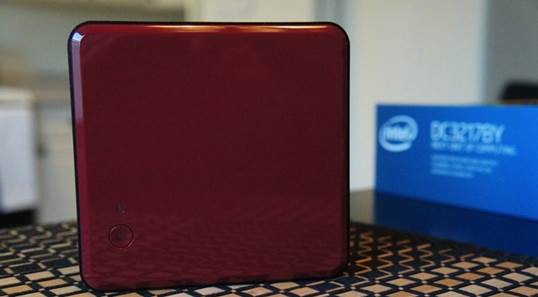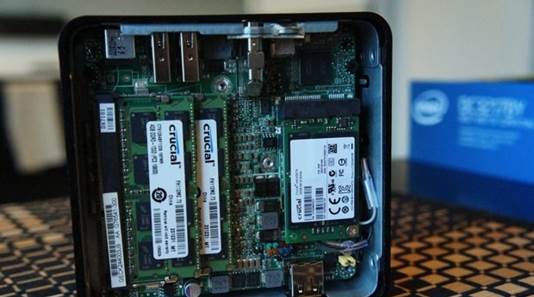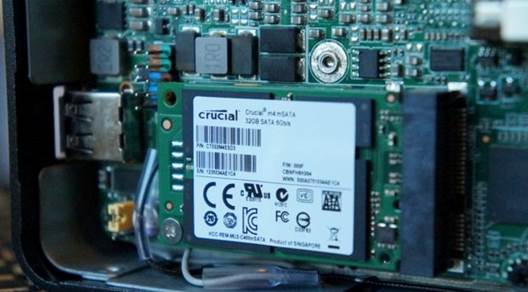The name says it all. In late 2012, Intel
quietly introduced the Next Unit of Computing (NUC): a basic desktop PC, which
represents at least a modern approach on a traditional beige box. NUC only 2
inches tall when lying and being stuffed in a 4-inch square frame. It has a
retail price of less than $300. However, do not let the small size or price
fool you. The Core i3 system is fast, stable, and more than capable of handling
everyday tasks phones. Yes, it is a move away from the noisy monster that we
desire only a few years ago. And it's much quieter.
However, before you are too excited, let's
curb the enthusiasm down a bit. As any basic kit, you will need to install
memory, storage, networking and wireless components and separate the operating
system. In other words, unless you are willing to dirty their hands, NUC is not
for you. There is also the question of cost, which becomes much less attractive
when you consider the list of required components. So, NUC good value for the
title of "Next Unit of Computing" (next unit calculation) does not?
Let's answer this question okay.

NUC
Intel
Hardware
If you have ever wished to have a computer that
can kick away the legacy technology and the components of the power drain, the Intel
NUC will be a hardware unit that is extremely interesting. It is the only
machine that includes minimum essentials needed in a modern desktop. We are
talking about SSD storage, integrated graphics, HDMI video port and few. Based
on the small frame of the NUC, it can even be attached to the back of the
monitor or TV with a VESA mounting bracket included. The entire system is
powered by 1 level than 65W adapter, but the kit does not include cables.
You've heard the right thing... you will need to add a 3 prong power cord on
the shopping list, otherwise you will be out of luck when it comes to starting
your computer. It looks a bit like Scrooge, if you ask us.

Intel
NUC will be a hardware unit that is extremely interesting.
The NUC is based on Intel's 3rd generation
Core i3 processor company. That is, we are seeing an Ivy Bridge setup. A 1.8GHz
dual-core processor (i3-3217U) is a low power version that you would normally
find in a laptop that is soldered to the mainboard. Naturally, the Intel HD
Graphics 4000 is part of the package, and is integrated into the CPU. The
expansion is limited to two DDR3 SO-DIMM slots (up to 16GB), a mini PCIe slot
support large drives SSD mSATA mini PCIe slots and 1 small size is perfect for
WiFi and Bluetooth. Fortunately, the wireless antenna is built in the NUC.

Despite
the modern parts of the NUC, its naming is somewhat antiquated.
Despite the modern parts of the NUC, its
naming is somewhat antiquated. The Core i3 comes system with two versions: the DC3217BY
and DC3217IYE. Needless to say, if Intel wants the NUC seriously, it will need
to place more friendly names on the list of things to do. On one hand, you have
the NUC Thunderbolt, which combines HDMI and 1 single Thunderbolt port that can
be used to control the second screen (2,560x1,440 max). Either provide 2 NUC
Ethernet and HDMI ports, you guess, one gigabit Ethernet port. Both systems
provide 3 USB 2.0 ports (2 in rear, 1 in front), and 1 Kensington lock port.
Because the system lacks separate audio outputs, you will need to ensure that
the screen has built-in speaker. If you need the other ports, such as USB 3.0,
Firewire, and so on, you can always buy one as Thunderbolt Express port
replicator.
While you are certainly interested in the
ability to connect more than colors, it is worth mentioning that the NUC
Thunderbolt has 1 upper panel made of red plastic, while the Ethernet NUC black
upper panel is made from aluminum. Regardless of version, the two models are
NUC simple model put function before aesthetics. We will not be surprised to
see Intel put more effort into the design of the NUC in the industry next
version, but it is clear the current generation targeting those interested in
inner beauty of the system.
Setup
Talking about inner beauty, if the NUC is attractive,
then get prepared to love it. The mainboard is not just one period of the
system design that is very easy to build. According to our experience, the
whole process takes less than 10 minutes, which includes a lot of time just to
admire the work of Intel.

Talking
about inner beauty, if the NUC is attractive, then get prepared to love it.
Simply put, as long as you are comfortable
installing RAM, you will not have any problems when building a complete system
from 1 NUC. To install the wireless module, you will only mount the antenna is
routed available, put the card into the mini PCIe slot in and screw it on. Then
wash your hands and repeat for SSD drives, which lies on the wireless card is
turned on and an insulator on the motherboard. Then insert 2 RAM and inserted
underneath the bark, which is tightened by 4 screws. It's very easy, and will
certainly beat the messy pile of cables that you are forced to deal with a set
standard desktop.

Naturally,
the components you choose will contribute to the overall performance and final
price of the NUC.
Naturally, the components you choose will
contribute to the overall performance and final price of the NUC. We have
chosen to configure our unit with 8GB Crucial DDR3 RAM, 32GB mSATA SSD Crucial
m4 and Intel Centrino Advanced-N 6235 wireless card, which provides WiFi and
Bluetooth 4.0. If you're trying to run on Windows 8, remember that you really
need at least 64GB of storage – only because the operating system is consuming
capacity. Speaking of Windows, it is a fairly expensive item, plus another $100
to the cost of the NUC is fully equipped. Needless to say, you can also choose
the Linux version for free and save money. To give you a better idea about a
complete NUC will cost you how much, we've compiled a shopping list from NewEgg
theoretically.